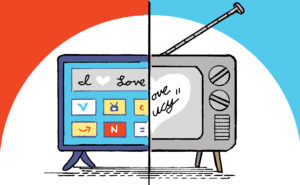Facebook made several overtures to openness on Wednesday with tools designed to give advertisers more control over where and how their ads appear across in-stream video on Facebook, Instant Articles and the Audience Network.
“Advertisers want separate controls for inside the news feed environment and outside the news feed environment where ads are more deeply integrated with content,” said Michel Protti, a director of product marketing at Facebook.
A pre-campaign transparency tool will let advertisers review where their ads could run on- and off-platform along with a mechanism to opt out of certain publishers if they don’t like what they see.
The solution addresses complaints that Facebook doesn’t reveal exactly where ads appear.
Advertisers, however, aren’t yet able to see a post-campaign list of where their ads ended up running, although Protti said Facebook “will look at continued enhancements as the product rolls out.”
In addition to pre-campaign transparency, Facebook is also working on letting advertisers automatically apply their block lists across their campaigns rather than going campaign by campaign, and soon hopes to let advertisers choose whether their Audience Network video ad placements are in-stream, native or interstitial.
The pre-campaign controls are in limited tests across Audience Network, with plans to release the full suite of updates over the course of the year.
The tools add to Facebook’s existing ad controls, including domain and app block lists, category blocking and the ability to opt out of running ads in certain environments like Instant Articles, Audience Network or in-stream video on Facebook proper.
But Facebook isn’t yet allowing third-party brand safety measurement.
Advertisers cannot place third-party brand safety tags on the platform to proactively block ads from appearing next to unsavory content.
The buy side keeps pushing, though.
“Neither Facebook or Google, for that matter, allows live third-party measurement that blocks ads from appearing adjacent to inappropriate content – and you know how we feel about third-party measurement,” said John Montgomery, GroupM’s global EVP of brand safety. “Whenever we have the opportunity, we encourage both Facebook and Google to consider third-party measurement and we encourage our clients to ask for the same. We’re pushing very, very hard, indeed.”
Google, for its part, did crack open its black box a smidge through a partnership with Integral Ad Science that gives advertisers additional visibility into where their ads are appearing on YouTube. GroupM is working with verification company OpenSlate to give quality scores to YouTube content.














